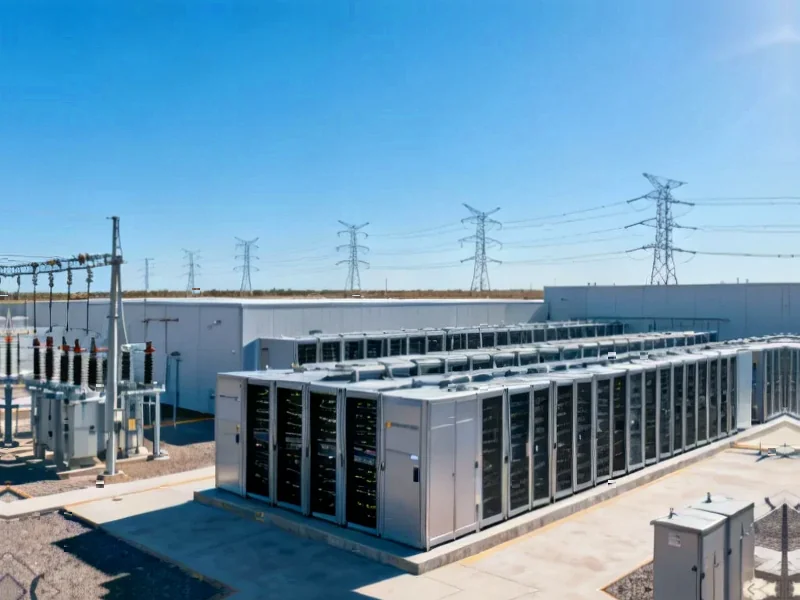According to Financial Times News, the hyperscale AI data center building boom has reached a staggering 46 gigawatts of announced capacity following OpenAI’s latest 1+ gigawatt Michigan project. This brings their total planned capacity close to the 10 gigawatt target floated earlier this year, with OpenAI alone projecting over $450 billion in spending over the next three years. Barclays estimates these 46 gigawatts would require $2.5 trillion to build and, using their 1.2 Power Use Effectiveness ratio, would need 55.2 gigawatts of electricity to function. That’s equivalent to powering 44.2 million American households—almost three times California’s entire housing stock. The financing for Meta’s massive Hyperian campus in Louisiana highlights how these projects are becoming reality despite the AI industry’s ongoing profitability challenges.
The Grid Reality Check
Here’s the thing: 46 gigawatts sounds impressive until you realize nobody’s actually built most of this yet. Barclays themselves admit that tracking “what is real vs. speculative is a full-time job.” We’re talking about an industry that still doesn’t turn a profit planning to spend trillions on infrastructure. Remember when OpenAI announced their Michigan expansion? They’re counting on DTE Energy to power it all, but DTE just increased its five-year investment plan by $6.5 billion—including replacing coal plants with gas turbines. So much for clean AI.
The Volatility Problem Nobody’s Talking About
But the bigger issue might be how AI data centers consume power, not just how much. Unlike traditional data centers running thousands of uncorrelated tasks, AI factories operate as single, synchronous systems. As Nvidia’s research shows, when training large language models, thousands of GPUs execute cycles of intense computation in near-perfect unison. The power draw can swing from 30% to 100% utilization and back in milliseconds. Imagine hundreds of megawatts ramping up and down in seconds—that’s a grid operator’s nightmare. It forces engineers to oversize everything for peak current, not average, which drives costs through the roof.
Where’s the Power Actually Coming From?
So how are companies addressing this? Some are building their own generation—Meta’s Prometheus campus includes plans for 516 megawatts from solar and gas turbines. Amazon is getting 1.9 gigawatts from Talen Energy’s nuclear plant. But let’s be real: most regional power grids are hopelessly inadequate for this kind of demand surge. That’s why OpenAI this summer asked for 100 gigawatts of new power generation annually while warning about an “electron gap” with China. Seriously? They’re invoking Cold War missile gap rhetoric that even the CIA knew was nonsense at the time.
What Actually Gets Built?
Look, maybe some of this gets built. Maybe we end up with a better grid. But $2.5 trillion is an insane amount of capital for an unprofitable industry betting on unproven demand. The “bragawatts” phenomenon feels like tech’s latest arms race—everyone announcing bigger numbers to impress investors. When the hype dies down, we’ll probably see which companies actually have customers willing to pay for all this AI compute. My bet? We’re looking at the next dot-com style infrastructure overbuild, just with way more electricity involved.




